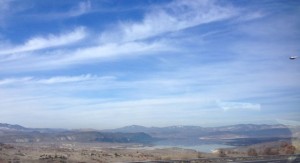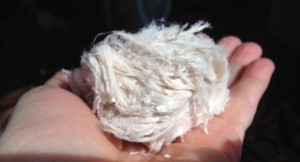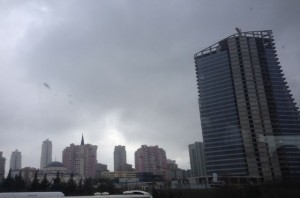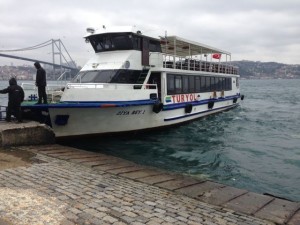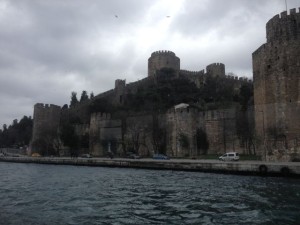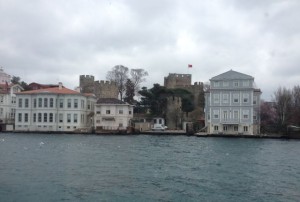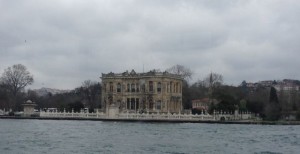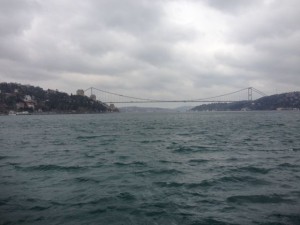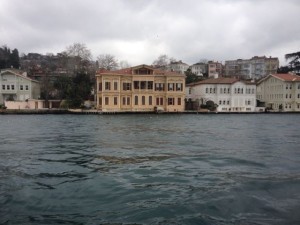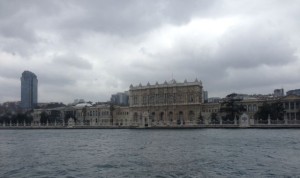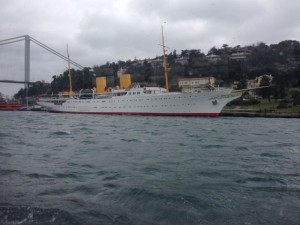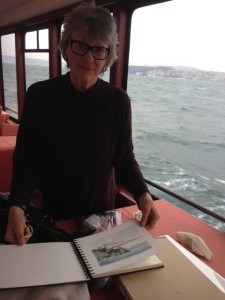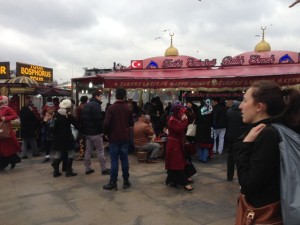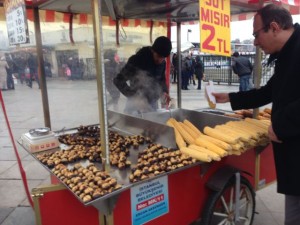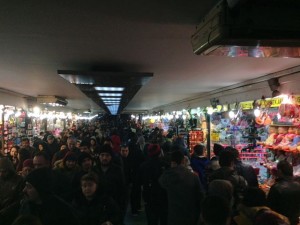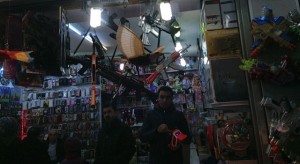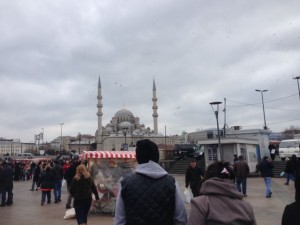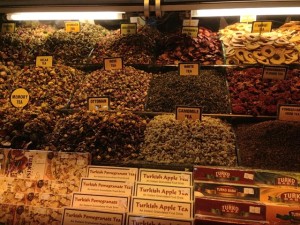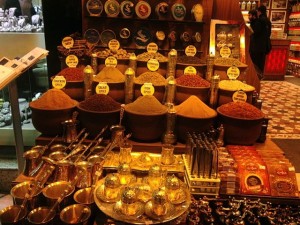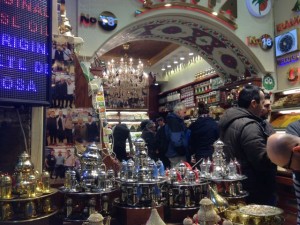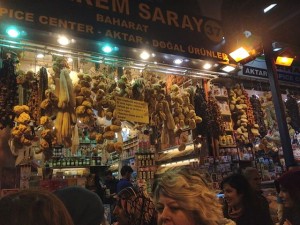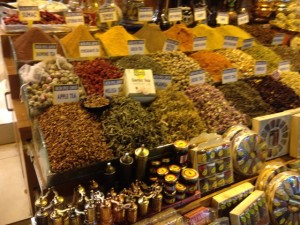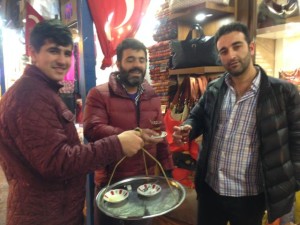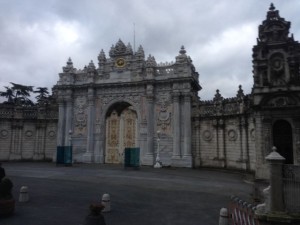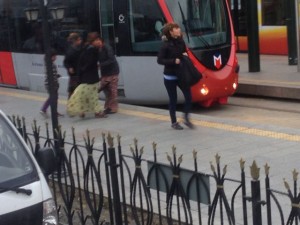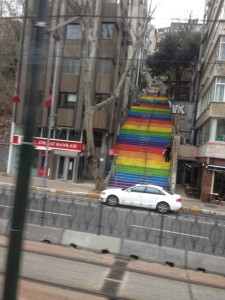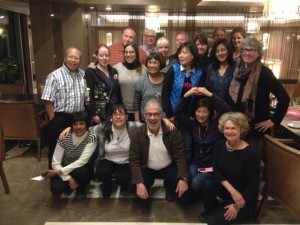Sat 3/7
Today we drive back to Istanbul. As we leave Ankara, we drive on a 3 lane superhighway towards the Black Sea. On both sides are sloping fields that grow winter wheat, sugar beets, onion, and potatoes. There are no trees.
According to Serder, the successive civilizations cut the trees for construction ad heating. The Romans also cut many trees to heat the baths. A small Roman bath would use 120 trees a day to heat the baths.
As we head to the Black Sea, Turkey’s green belt, we cross the Taurs mountain range (9,000ft), running east west, the slopes covered with fir trees and snow.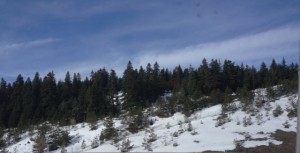
Around ten am, we pass through a 2 mile tunnel that saves 40 min over having to drive over the mountain. When it snows, they have to close the tunnel because when you come out, the roads, which go over viaducts, are icy.
Serder shares Turkish cotton candy. It has the texture of spun dry silk but tastes of almonds.
Just outside of Istanbul, we pass through Ismit, a city destroyed in a 1999 earthquake that killed 17,000 people. All the housing is new, rebuilt by the government. The fault line stretches 30 miles towards Istanbul.
We arrive in Istanbul and are driven to the Bosporous for our cruise, which turns out to be an entire boat chartered just for 8 of us. The Bosporous is 16 miles long and Istanbul extends for 45 miles on either side of it.
We cruise past the lovely Yalu, wooden mansions built in the 1800s along the sea, most now owned by wealth Turks. 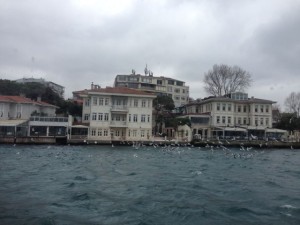
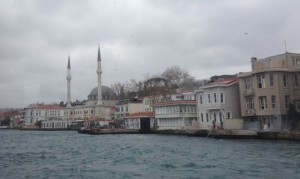 The houses sell for several million up to 150 million. If they need to be repaired, which many do, they rebuild in exactly the same style out of concrete and then cover the exterior with wood to match the original.
The houses sell for several million up to 150 million. If they need to be repaired, which many do, they rebuild in exactly the same style out of concrete and then cover the exterior with wood to match the original.
We pas the two fortresses built by the Ottomans before their siege of Constantiople, (they wanted to block aid coming in from the sea). One one called the Roman fortress because it is on the European side (built in 1552), and the other on the Asian side built in the 1350s.
We pass the 1853 Palace for the Sultan’s mother built in a combination of Roccoo, Baroque, and Neocalssical styles (because you never knew which would last).
The two suspension bridges were built in 1977 and 1988 and they are considering building a third although it is controversial.
The white building was built for the mother of the Ottoman governor to Egypt. He was taken as a child, educated in the Ottoman court, and rose in the hierarchy (as did many of the foreign children raised in the Ottoman court). Today it is the Egyptian consulate.
We also pass the Sultan’s Summer Palace, an enormous white Baroque and Rococo structure.
When we disembark, we make our way through the crowded waterfront cafes and street vendors.
We make our way through the crowded waterfront to an tunnel beneath the road where all sorts of plastic ware is on sale
We emerge onto the square in front of the New Mosque (for the new mother’s mosque),
and into the spice market, which was crowded with locals. The aromas of spices fill the air, and crowds pack the narrow aisles between shops, providing an explosion of sensory details.
On our way back to our hotel, we pass the Summer Palace Gates
and experience Istanbul traffic. We witness street children play out a drama where one pushes the other onto the streetcar tracks (no car coming), where she weeps, but when no one offers money, she gets herself up. One woman with a backpack (perhaps a tourist) takes off her shoes and gives them to the girl and takes a second pair of shoes out of her back pack to put on. The street girl puts on the shoes and the grop slips in to the next streetcar.
That night at dinner, Ellie shows her work and sells several pastels. After dinner, we take a group photo. We had such a small and congenial group, I believe my first bus trip has spoiled me.




